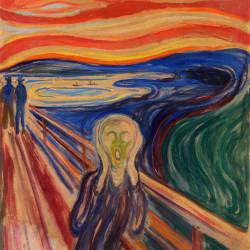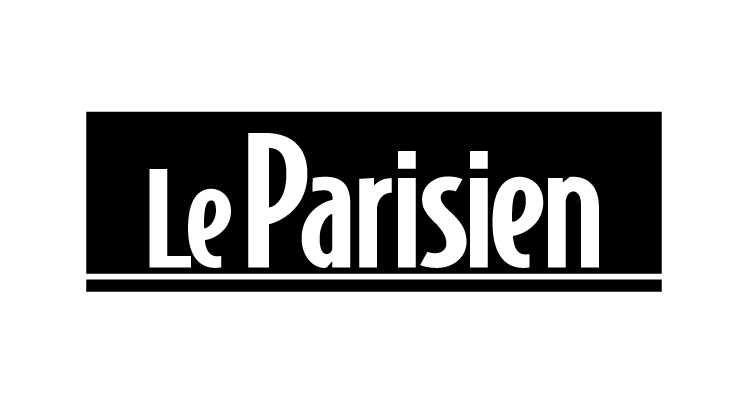Artwork of Edvard Munch canvas prints & artprints
Considered one of the precursors of Expressionism, and having rightly left his mark on the history of art through his personal vision of painting, Edvard Munch quickly found his own style, letting emotions take precedence over his subjects. A painter, engraver, photographer and even film-maker, Munch was a jack-of-all-trades, and throughout his career he allowed the painful events that marked his life to express themselves.
Discover Edvard Munch's most beautiful paintings, including the oil on canvas "Starry Night", painted during his stay in Asgardstrand, an important page in the painter's life, and his famous painting "The Scream", with its curves and tongues of fire that reveal the artist's feelings of anxiety, or his oil painting "Self-portrait in Hell", a self-portrait on display at Munchmuseet, which reveals the artist's feelings about himself in a unique expressionist style.
Treat yourself to a reproduction of the Norwegian expressionist painter, a pioneer of this artistic movement, with one of the paintings available in the catalogue, and find out more about his biography.
Edvard Munch biography
Edvard Munch's early life: a tormented family life and training in realism.
The second child in a Puritan family of 5 brothers and sisters, Edvard Munch was born in 1863 in the small Norwegian town of Løten, north of Christiania, better known today as Oslo, the capital of Norway. Edvard Munch's youth was quickly marked by death, with the tragic deaths of his mother, who died of tuberculosis when he was just 5, his sister Johanne Sophie, who died of phthisis at the age of 15, and his brother, who died suddenly in 1895, as well as illness, his sister Laura Catherine being depressed and Edvard Munch himself being a sickly, sickly child. This youth marked by despair and melancholy was to have a major influence on Munch's compositions.
Following in his father's footsteps as he worked as a military doctor across Norway, Munch was introduced to art by his aunt Karen Marie, who had taken over the maternal role with his nieces and nephews following the death of her sister. Although he wanted to become a painter from an early age, Edvard Munch studied at the Christiania Technical School on the orders of his father, who was much more rigid and saw art only as a hobby. After two years, he gave up his engineering studies to paint, and Munch joined the Royal School of Drawing in Christiania, the equivalent of the Academy of Fine Arts. At the same time, he trained in makeshift workshops where he met the naturalist Christian Krohg, who enabled him to obtain a scholarship. He studied academicism, with works by the great masters of European painting, as well as the artistic currents of French realism, romanticism and naturalism. It was during this period that he painted several works such as "Inger at the Beach", painted in Asgardstrand, a town that was to recur frequently in Munch's work, but above all the first of three portraits of his sister Sophie, with the painting "The Sick Child", which laid the foundations for Munch's expressionism and his desire to show his feelings in his brushstrokes.
Edvard Munch's travels in France and Germany were a major influence on his work.
From his early days as a painter, Edvard Munch began a new chapter in his life, travelling on numerous occasions to the European art centres of the time, such as Paris, where he discovered the Impressionist movement and famous Impressionist and Post-Impressionist artists such as Gauguin, Van-Gogh and Cézanne. These works, which gave free rein to light and emotion, had a profound effect on Munch, and naturally led him to move away from realism. This tendency can be seen in the oil on canvas "Night at Saint-Cloud", which he painted following the death of his father in 1889, and which is a first step towards symbolism, where mood takes precedence over the very nature of the work. It was also in the early 1890s that he sketched the first lines of what was to become his most famous painting: "The Scream".
After a first exhibition of his work in Christiania in 1889 and a second in 1891, as well as a retrospective exhibition of his stay in France in 1892, Munch was invited to Berlin the same year, where he caused a scandal with his paintings, which were decried by the public and traditional painters. This was all it took to establish his reputation in the country, where he decided to settle. By frequenting German intellectual circles, and later the artists of Art Nouveau on his return to France in 1896, Munch constantly modified his art, moving ever more towards expressionism, and even introduced himself to lithography, He even learnt about lithography, tempera and wood engraving from the printer Auguste Clot, and about the philosophy of Friedrich Nietzsche from the poet Stanisław Przybyszewski, the sculptor Gustav Vigeland and the historian Julius Meier-Graefe.
Edvard Munch: a precursor of the Expressionist movement.
Inspired by the German Expressionist art movement of the late 19th century, from the 1890s onwards Munch's compositions increasingly dealt with existential anguish, in aesthetics where the dramatic, the uneasy and the emotional had a predominant position. It was during this period, from 1893 onwards, that he began "The Frieze of Life", a series of paintings following a precise code in the order in which they were exhibited, and which was to evolve constantly throughout his career. It includes his most famous paintings, such as "The Scream", "The Madonna", "Anxiety" and "Death in the Sick Room", in which Munch paints in a pictorial style close to abstraction, with strong curves and raw colours, as well as homogeneous flat tints, which gradually led to Edvard Munch being recognised as a precursor of abstract expressionism. For the Norwegian painter, this expressive representation was a gateway to the expression of his existential anguish, and inspired many symbolists and abstract painters of the early twentieth century.
Edvard Munch: a successful artist.
At the dawn of the 20th century, the Norwegian Symbolist painter was becoming increasingly famous in Europe, and in 1902 he exhibited his frieze in its entirety at the Berlin Secession exhibition, based on the Munich Secession model. This fame among his peers, the public and art critics enabled him to take on major commissions, particularly portraits, such as the full-length portrait "The Four Sons of Doctor Max Linde". This did not, however, prevent a scandal, as the wealthy patron felt that the eroticism displayed on the walls of his sons' bedroom, with drawings of women and flowers, was inappropriate. At the same time, Munch experienced several unhappy love affairs, but also a life of debauchery that included alcohol and gambling. In 1908, in turmoil, suffering from depression and hallucinations, he wanted to turn over a new leaf and went to Copenhagen to see Dr Jacobson, whose portrait he would paint. In his room, a veritable artist's studio of photographic experimentation took shape. These setbacks did not prevent Munch from enjoying great success, the painter being decorated with the Order of St Olaf in his native country, and his paintings being exhibited across Europe, notably at the National Gallery in Christiania, culminating in the 1909 Cologne exhibition, which devoted an entire room to him.
A peaceful end to Edvard Munch's career.
With the outbreak of the First World War in Europe, Edvard Munch was forced to return to Norway, where he bought his property at Ekely in Skøyen, on the outskirts of Oslo. In Ekely, a thousand miles from the fighting, more at peace with his solitary existence, he painted his love for Norwegian landscapes, with forests, countryside and the Oslo fjord, always with that expressive touch characteristic of his work. After the war, Munch, who had already been introduced to photography, tried his hand at short films with a small camera. As the Second World War loomed, Munch's work was discredited by the Nazis in Germany from the 1930s, and then in much of Europe during the 39-45 period, who considered the Norwegian artist's paintings to be "degenerate art". In 1944, Edvard Munch died of pneumonia at the age of 80 at his home in Ekely. A large part of his collection was bequeathed to the Oslo town hall, and as proof of his recognition in the art world, despite the reticence of the Nazi regime towards his compositions, a public funeral was organised by the Nazi occupying power in Norway.
Edvard Munch's legacy in the history of the arts.
At the forefront of Expressionism and Symbolism, Edvard Munch, with his exhibitions throughout Europe, was a gateway to a new style of painting, and during his lifetime inspired countless great Expressionist painters, and later the Surrealist movement, such as Kandinsky and Franz Marc. Even today, Munch's work remains a landmark not only in painting, but also in art in general, from experimental music to expressionist cinema, which Munch himself experimented with towards the end of his life. As a result, Munch's work can be found in many museums around the world, with the largest part of his collection in Oslo, mainly at the Munchmuseet, but also at the National Gallery and the Norway Central Bank. Elsewhere, Munch can be found in dozens of exhibition venues around the world, including the Museum of Modern Art in New York (MoMA), and in his two host cities, the Musée d'Orsay in Paris and the Neue Nationalgalerie in Berlin.

















































































































































